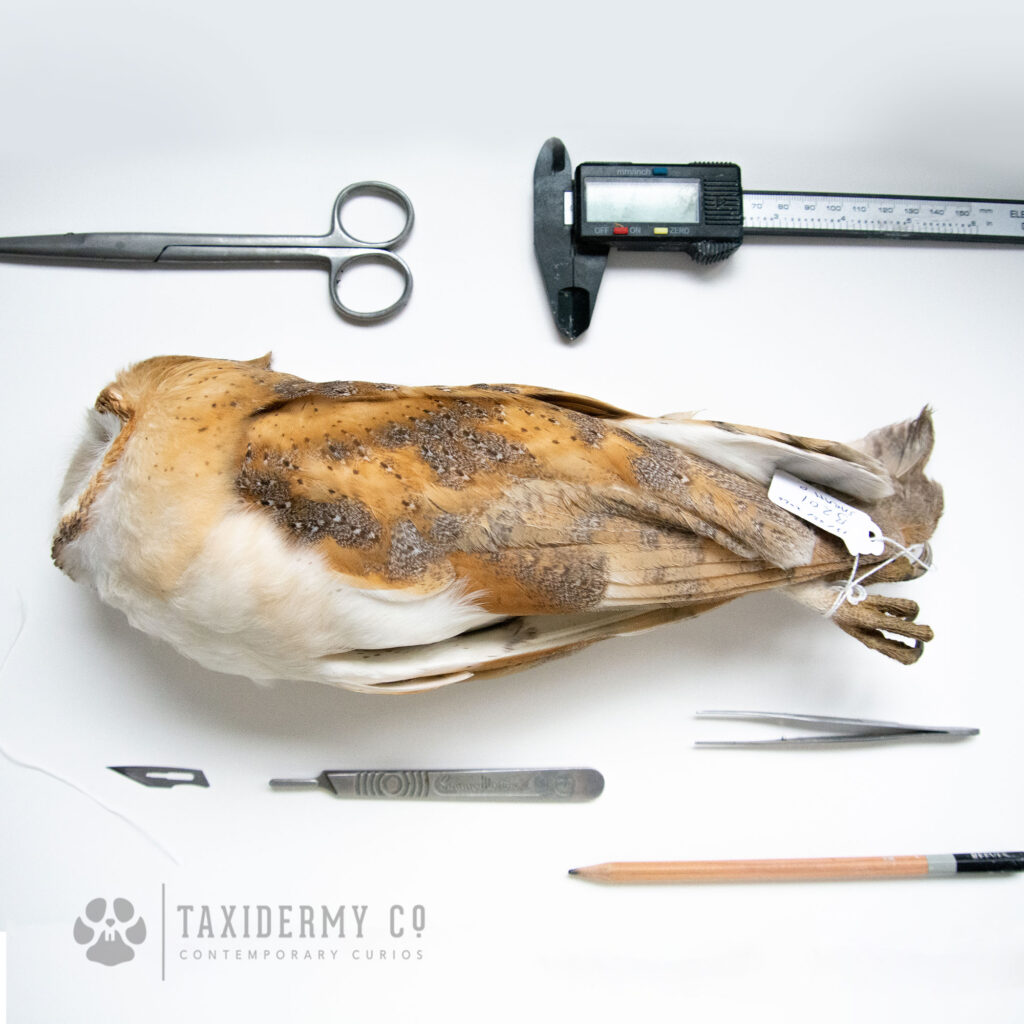Have you just found an animal or bird that you would like to get made in to a taxidermy mount? Then carefully observe the below guidance, as there is some pretty important steps that you need to follow.
1. Is it legal?
The first and most important thing to take in to account before you even touch a deceased animal, is the legalities that surround it.
It’s crucial to determine wether or not the animal in question died in lawful circumstances, too. If you stumbled across a bird of prey for example, that is away from a main road and has no obvious cause of death, it’s best to not touch it, to take photos and check over for any shot wounds or tightly clenched talons, which could indicate unlawful activity. You’d then need to contact your local police and report a potential wildlife crime.
However, finding a deceased bird on the floor that’s close to a building, it’s safe to presume that it has met its untimely fate with a window. (make sure it’s not just stunned before putting it in the freezer).
In the UK, there are certain species of animal that you cannot even possess or pick up without having a licence. Most are listed as European Protected Species (EPC) and are found on the Annex IV list of the Habitats Directive. They include European otter, all species of native bats and marine mammals.
2. Safety first
It is a well known fact that dead animals have the potential to harbour and spread disease, therefor it is a good idea to wear gloves before handling any dead animal and wash them thoroughly straight after.
Parasites like fleas and ticks will try and find another host soon after death, and you certainly don’t want to find yourself being their next host!
After the specimen has been frozen for a couple of weeks, the majority of bacteria, bugs and parasites would have perished and become inactive, which is why I don’t work on specimens before freezing them. Use the following guidance to prepare your specimen for freezer storage.
3. Take note
Once you feel comfortable that the specimen in question is in your possession lawfully, if taken from the wild, the next step is to record some important details. On a piece of paper with your name, address and contact details, please note exactly where you found it, the date and the likely cause of death.
This information is a legal requirement on the taxidermist’s part and is not used for any other purpose, other than to prove that every specimen in his or her inventory was acquired in compliance with various wildlife laws that are in place.

4. Preparing a specimen for freezer storage
You’ll need to place the specimen in a freezer (not the fridge!) as soon as possible to temporarily preserve it until it can reach the taxidermist’s hand. This will halt the decomposition process and keep it fresh for mounting. There are a few additional steps below to ensure you store it correctly.
The less air around the specimen, the less chance it will succumb to freezer burn. This is when the moisture from the carcass’s muscles and soft tissue escapes and makes areas of the skin very dry, white/yellow in appearance, dehydrated and generally quite challenging to work with.
Wrapping the specimen in clingfilm is a popular material and method to store specimens safely in the freezer for taxidermy. Additionally, air tight grip lock bags or vacuum seal bags are also a great way of keeping the specimen in the freshest condition, especially if keeping in freezer storage long term.
Refrain from using any absorbent materials such as cardboard, kitchen roll or paper as this will encourage moisture from the specimen to seep out.
Another way to keep freezer burn at bay, is to place the specimen in a container or sealed bag of water before storing it in the freezer. However, this method is not advised if you plan on transporting the specimen through travel or post, due to the risk of leakage as it defrosts.
Although it’s best to process deceased animals that have been kept in the freezer sooner rather than later, if stored correctly, specimens can last many decades in the deep freeze before getting mounted!


